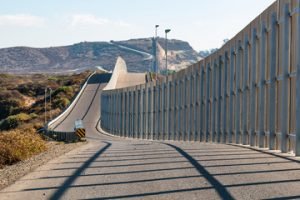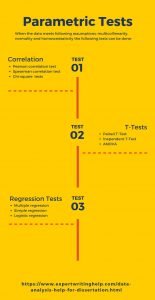Why You Support U.S Economic Shutdown Over Border Wall Stalemate.
 Early 2019 saw partial economic shutdown in the United States as a showdown loomed over President Trump insistence of funding bill include his Mexico border wall budget. The United States of America is one of the world’s superpowers and economic strongholds. Mexico has for some time now attached itself to America, despite the fact that they are only neighbors and not one. However, tables seem to be turning with the election of Donald Trump as the President of America. Mexico has been known for its shady ways of operation with all the smuggling, drugs, gangs and don’t forget that they have a large number of them living in America as illegal immigrants. This spills right into the states under the noses of the government. However if only Mexico would be denied free access to the states then maybe, just maybe the cartels spreading their tentacles to America would be crippled.
Early 2019 saw partial economic shutdown in the United States as a showdown loomed over President Trump insistence of funding bill include his Mexico border wall budget. The United States of America is one of the world’s superpowers and economic strongholds. Mexico has for some time now attached itself to America, despite the fact that they are only neighbors and not one. However, tables seem to be turning with the election of Donald Trump as the President of America. Mexico has been known for its shady ways of operation with all the smuggling, drugs, gangs and don’t forget that they have a large number of them living in America as illegal immigrants. This spills right into the states under the noses of the government. However if only Mexico would be denied free access to the states then maybe, just maybe the cartels spreading their tentacles to America would be crippled.
Every now and then we must have all stumbled on an epic movie, say the great wall or some other 200BC movie. They all have one thing in common that they all have a wall that around their cities for security. However, incorporating this idea in this generation is quite unthinkable and quite expensive to start it all at scratch. Such plans made in a short time will definitely have an impact on the economy. I do tend to think that right now, all eyes are fixed on Donald Trump to see how everything rolls out. The wall is not yet rolled halfway at least and it already has an impact on the economy. There has been an economic shutdown (something that was quite unthinkable by the rest of the world, However, I will be breaking it down to the simple basics.
Budget projections
Every government is run on a budget and every successful economy is built on solid numbers which are quite elastic giving an allowance of an addition or a deficit of some funds to spare. However, I tend to think that the Mexican wall was not thought out clearly. There was a projection that it would only cost between 8 to 12 billion. However, this figure is in-comprehensive of fluctuation. However putting everything in place, uncertainties included and the new steel material that will be used, the figure rises to a practically an estimate of 18-25$ billion, however, this figure is variable of who is doing the projections but this is the minimum figure in play. This will definitely be a blow to the economy. I tend to think that such a project carrying such a huge amount of time and resources should be done on something that will generate income back. A prototype of the wall was actually created, going down with it 20 million dollars. The prototype was to get the picture of what is to be built and an idea of what to expect. It is also a good platform to put in recommendations and adjustments to the plan such that when the project commences, it will have very few setbacks and almost zero adjustments
Specifications of the wall.
The projected wall is supposed to be quite a fortress and it has attracted the attention of all specialists in the industry and its specifications are quite impressive. Apparently, the Mexican border wall was in trumps campaigning agenda but in a way, people never thought of it as serious as it now appears to be. However, this wall is specified to Donald trump’s specifications. Let me try painting a picture of this wall in your mind. Once in a campaign rally, he said that he intends the wall to be a see-through wall arguing that “if you can’t have the vision, you don’t know what’s on the other side”. The wall is intended to cover about 2000 miles Homeland security took the liberty to check out the prototype and give some input to make the wall as effective as possible and perform on the primary function of denying access to passage of drugs, illegal immigrants and this means no one will be able to climb through the wall. The wall will be 18-30 feet and will be able to withstand any tunnel going couple of 6 or more feet deep. This eliminates the possibility of “Mexican moles” coming through underground. The wall will incorporate multiple materials to build as part of it will involve concrete, steel and some transparent material that we haven’t been let in on yet. The wall might be shorter than the actual distance of the border having in mind that there are natural walls all around such as rivers, mountains that will not need any additional wall. However such areas will have backup barriers and patrols just around them.
Wall funding
The border wall will definitely cost lots of money and the taxpayers will feel the pinch of that at the end of the day. However, Donald Trump says that actually, Mexico will be paying for the wall. The thought of that sounds crazy but come to think of it, he is the president, the guy in the high seat. This comes days after a couple of offers were given to counteract his offer and there was a bargaining chip on Mexico to help in the funding, but let the Mexican immigrants in the states remain. I tend to think that of all the determined people I know, Donald Trump definitely comes on top. Since back in the day while campaigning, he presented his dreams, goals and agendas and true to the word he is running with it. Nothing is coming between him and his wall. He is determined that wherever the funding comes from either from Mexico or his government it has to be done. The issue on Mexico funding the wall has been adamantly refuted by both the former president of Mexico, Enrique Pena Nieto and the current president, Andres Manuel, however, word is that if they don’t agree to it then the U.S will be cutting off some of its vital income generating trades and this will dent the Mexican economy. I tend to think however that being world leaders who have the whole world’s eyes on them they should talk things out and come to a fair agreement.
Economic shutdown
”We will be forced to close the Southern Border entirely if the Obstructionist Democrats do not give us the money to finish the Wall & also change the ridiculous immigration laws that our Country is saddled with. Hard to believe there was a Congress & President who would approve!” is a statement from one of the many tweets from the president himself. However, I tend to think that there is a bigger picture that he is ignoring of the corporate community at large. For once now the American feels the real impact of the power that is vested into the president, the kind of power that can send people home and bring an economic shutdown to a whole economy. About 25 percent of the federal government has been shut down since Saturday, with roughly 800,000 workers affected, including an estimated 350,000 who are on furlough at home. This number will definitely have an impact on the GDP of the country and maybe, just maybe leave a mark on their international relationships. $11 billion dollars have been lost through the five weeks partial government that has been there.
Purpose of the wall
The Mexican wall is projected to able an added security feature in favor of the United States. For long, the Mexican streets have been run by gangs and they have quite a reputation for the drug trades and this spills right into America. As the saying goes, you cannot get a different result by doing the same thing, you have to do something different to get different results. This is the kind of concept that is at work on the wall project. If adding security personnel still leaves a pothole then what about building a concrete, see-through wall to keep the trade fully out. The thing is that with the completion of the wall, the whole world will be fixated as seeing how effective the wall is and that will keep Donald Trump’s wall on the weighing scale and trust me it will not only the top talk on twitter but also on the top search subject. The wall will serve a primary function of cutting drug trade and routes to the states but also the secondary function of after eliminating the issue of “importing” drugs will now deal with the domestic drug circle.
Pros and Cons of the wall
 Come to think of it, the wall is not as bad as it sounds really it has also a good side to it. As much as there has been a shutdown the wall will create a good employment platform as a lot of labor will be required. They will be sourcing of not only skilled labor but also semi-skilled and unskilled guys work on the project. A couple of projections have been done and the signs show that as soon as the finances come through, the wall will commence and it should be completed in the shortest time possible. However, on the other side, there will be a strain in the relationship between Mexico and the United States of America and Mexico would suffer a bigger fate than that. Trades from the states to Mexico will also be affected and I project that the rates will go higher and the process quite longer, thanks to all the security measures and bottleneck requirements. The economic shutdown has already come once and not everyone knows that Trump will still build that wall at the expense of the economy of the nation and not sparing his reputation if need be. At this point the Congress and the Republicans in the “house “ will bend to his will as they try to see the bigger picture of stabilizing the country’s economy, after all, they still got on board after losing 0.2% on their GDP. I also tend to think that the government should be in full support of Trumps plans all the way through, having in mind that he laid all his card on the table for them and they voted him in knowing very well that he is was ready to run with his agenda. This will definitely go down to the legacy of Donald Trump but the more this story is disputed may also add an economic fallback to his legacy. Despite the fact that this may be far-fetched, this wall will definitely go down in history and be a tourist attraction later in the days.
Come to think of it, the wall is not as bad as it sounds really it has also a good side to it. As much as there has been a shutdown the wall will create a good employment platform as a lot of labor will be required. They will be sourcing of not only skilled labor but also semi-skilled and unskilled guys work on the project. A couple of projections have been done and the signs show that as soon as the finances come through, the wall will commence and it should be completed in the shortest time possible. However, on the other side, there will be a strain in the relationship between Mexico and the United States of America and Mexico would suffer a bigger fate than that. Trades from the states to Mexico will also be affected and I project that the rates will go higher and the process quite longer, thanks to all the security measures and bottleneck requirements. The economic shutdown has already come once and not everyone knows that Trump will still build that wall at the expense of the economy of the nation and not sparing his reputation if need be. At this point the Congress and the Republicans in the “house “ will bend to his will as they try to see the bigger picture of stabilizing the country’s economy, after all, they still got on board after losing 0.2% on their GDP. I also tend to think that the government should be in full support of Trumps plans all the way through, having in mind that he laid all his card on the table for them and they voted him in knowing very well that he is was ready to run with his agenda. This will definitely go down to the legacy of Donald Trump but the more this story is disputed may also add an economic fallback to his legacy. Despite the fact that this may be far-fetched, this wall will definitely go down in history and be a tourist attraction later in the days.
The bigger picture
Let’s look at the bigger picture of the whole economic shutdown in the country. Despite the fact that there has been a partial 35-day old economic shutdown in the county and a strain on the economy, there is also something that will come from this whole situation. Donald Trump has set up his priorities to bring the military on board and get them a good deal out of this whole situation. The world went into mixed reactions after Donald Trump withdrew American soldiers from Syria and they thought that this has some political backing to it or some hidden agenda but they are simply coming back home and give a helping hand. He said that the American army hasn’t gotten such funding dedicated to them in a very long time and he has a huge pool to funds dedicated to them. There also is a good bit to this, right? The county will also get rid of the issue of drugs and substance and this will set the young people to purpose and this actually gets the house business in order. As much as the everyone is entitled to their own opinion I tend to think that the fact that they choose to get this government working for them, with all their agenda they are obliged to work with them and move with the flow. The economic shutdown has been enlightenment on the American people on what system they operate on and how much some decisions will flow down to the neighborhood and the household.
Assignment Topics on Economic Shutdown & US-Mexico Border Impasse
Intense debate has emerged on the impact of economic shutdown on the US economy. At expertwritinghelp.com we expect students to be assigned essays and research papers that will discuss the following topics:
- The impact of economic shutdown on the U.S economy
- Economic benefits of the US-Mexico border wall
- Your position on economic shutdown
These are some of the assignment topics that you will likely encounter. Feel free to buy economics essays from our economics essay writing service online.





